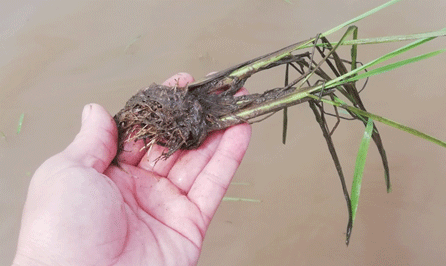Strategies for Saving Flooded Rice Crops in Northern Vietnam
Northern Vietnam has recently experienced heavy rains, leading to severe flooding that threatens newly planted rice crops. This situation has caused widespread concern among farmers and local authorities, who fear the loss of a critical rice season. To address this crisis, Hoang Van Hong, Deputy Director of the National Agricultural Extension Center (Ministry of Agriculture and Rural Development), offers valuable insights and strategies to help farmers save their crops and ensure a successful harvest.
Immediate Flood Management
The first crucial step in rescuing flooded rice fields is to drain the water quickly. Hoang Van Hong emphasizes the importance of expediting drainage in flooded areas to prevent long-term damage to the rice plants. For fields in low-lying areas, using drainage systems or pumps can help remove water efficiently, ensuring the fields are not submerged for extended periods. Regular maintenance of canals and ditches is essential to facilitate quick water evacuation during heavy rains.
Recovery Measures for Partially Flooded Fields
For rice fields submerged for two to three days, prompt water drainage is critical. After draining, it’s vital to expose the soil to air, which helps the roots recover and the plants to regain strength. Farmers should immediately replant any areas where the rice plants have died due to prolonged flooding, using seedlings of the same variety. Following the guidance of agricultural experts on plant care will enhance the recovery process.
Farmers should apply fertilizers and growth enhancers to support plant recovery. Using NPK fertilizers with high phosphorus content can stimulate root growth and improve plant resilience. Additionally, foliar sprays of growth regulators can further boost the health and recovery of the rice plants.
Strategies for Severely Affected Fields
For fields severely affected by prolonged flooding, where the rice plants are beyond recovery, farmers should prepare to replant using short-duration rice varieties. This approach ensures that the new crop can be harvested within the current season’s timeframe. It is crucial to rework the soil and plant as soon as possible, ideally before the end of July, using seedlings that have already developed three to four leaves.
Long-term Soil and Plant Care
In fields that have not been completely submerged, farmers should prioritize timely care. This includes applying fertilizers immediately after the plants show signs of recovery and using foliar sprays to promote growth. Adjusting water levels to prevent further submersion while avoiding plant lodging is also critical. Regular monitoring and the use of balanced NPK fertilizers can prevent pest and disease outbreaks and ensure robust plant growth.
Alternative Cropping Strategies
In cases where replanting rice is no longer feasible due to timing, farmers should consider switching to suitable vegetable crops once the water has receded. This approach not only salvages the season but also provides an alternative source of income.
Prolonged flooding poses a significant threat to rice crops in Northern Vietnam, but with swift and effective measures, farmers can mitigate the damage and secure their harvest. Implementing proper drainage, replanting strategies, and careful plant management are key to overcoming this challenge. By following expert guidance, farmers can ensure their fields recover and continue to thrive despite adverse weather conditions.
Error




